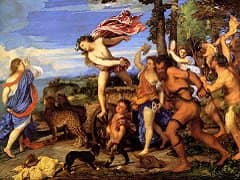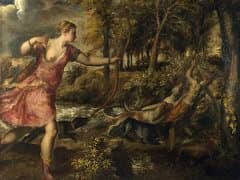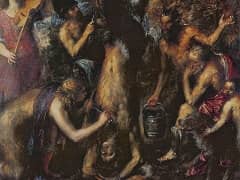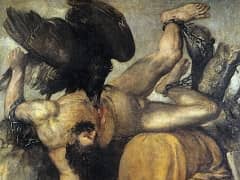Flora, 1516-20 by Titian

In a series of paintings executed following his return from Padua, Titian explored the Giorgionesque half-length figural prototype. Characterized by a certain intimacy, the motif offers a close-up view of its subjects, who, cut off by and appearing immediately behind the frame, present themselves directly to the beholder. Working within this compositional context, Titian developed a type of image informed by classical restraint as well as by a gentle sensuality ; the actual themes were as varied as the tender horror of Salome with the severed head of the Baptist (Galleria Doria-Pamphili, Rome), the genre-like and probably allegorical scene of a woman at her toilet (Musee du Louvre, Paris), and the classical Flora.
Whether or not she actually represents one of the celebrated courtesans of Renaissance Venice, Titian's Flora established an influential model of sensual invitation. The subject herself - the nymph, once ravished by Zephyr, who in turn became seductress - and her visual presentation - the alluring dishabille frequently found in ancient Roman portraits - both derive from aspects of the classical tradition. Her camicia, or undergarment, is loosened to reveal the beauty of her bare bosom, gently touched by her falling tresses; with one hand she holds her gown protectively against her and with the other offers a bunch of flowers - and, by implication, herself. Significantly, however, her glance does not meet ours, and hence that offer is not made directly to the observer. This averted gesture and the direct appeal of her uncovered flesh combine to enhance the quiet eroticism of the image. Her form fills the pictorial field, and the auburn beauty thus seems accessible by her proximity, yet she is removed; the distracted gaze of her dark eyes suggests another dimension of experience, a realm of awareness beyond our reality and to which we can aspire only by a reach of the imagination. Playing thus with dualities - nearness and distance, sensual allure and idealized beauty - Titian creates a world of poetry, the aesthetic perception of which further heightens the attraction of this Flora.















